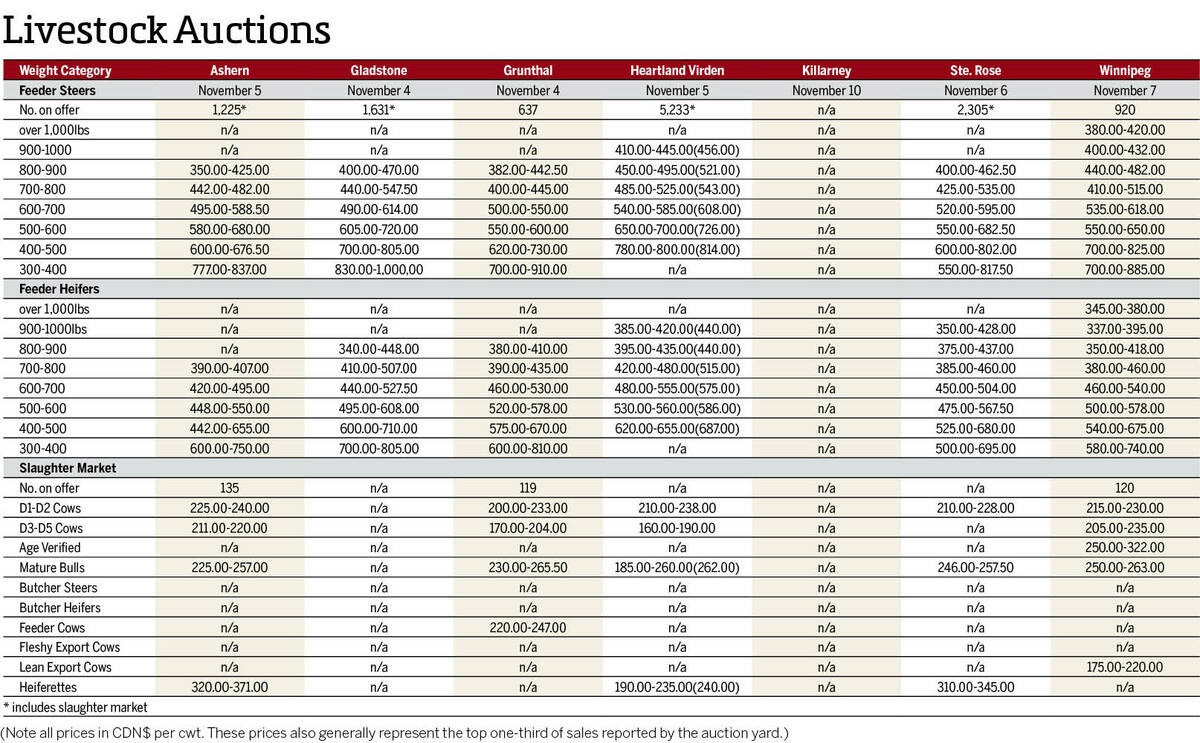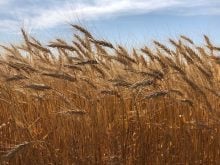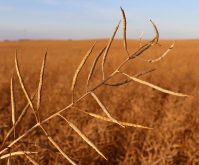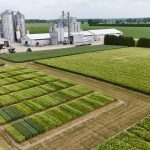The Prairie drought was the major market-moving story of the year for Canada’s grains and oilseeds in 2021, even supplanting the ongoing worldwide pandemic as the primary topic of discourse for much of the year. While the uncertainty of the global reaction to new variants will keep COVID-19 as an influence in the financial markets for some time, the weather should be expected to retain its dominance as far as the agricultural markets are concerned.
In addition to those well-known and well-covered influences — and in no real particular order — the following are eight other factors to round off a top 10 list of market-moving things to watch for in 2022.
Read Also

Manitoba cattle prices – Nov. 10
Cattle prices from Manitoba’s major auction marts for the week of Nov. 4-10.
Energy prices
As this year-end story goes to print ahead of the holidays, the Omicron variant has raised fresh concerns in the energy sector to weigh on crude oil. Lower oil is typically a bearish influence on grains and oilseeds, especially those connected to biofuel production.
Biofuel
That said, the overall interest in producing renewable fuels appears to be on the upswing, with a number of major canola-based biodiesel facilities in the works for Western Canada. As those plants come online, Canada’s domestic crush will need to rise in order to meet the growing demand.
Currency
Also linked to energy prices is the Canadian dollar. A stronger currency cuts into export demand while a weaker currency makes exports more attractive to international buyers. The loonie traded as high as 83 U.S. cents over 2021, but was closing out the year near where it started, around 77 U.S. cents.
Canadian exports
Export movement of most Canadian crops is expected to be down substantially through the first half of 2022, as the supplies just aren’t there after the drought. The question for the latter half of the year will be, what happens with those markets in the long term? Will that demand come back?
Politics
Beyond the supply/demand fundamentals that dictate the international movement of agricultural goods, those trade flows can also be heavily influenced by politics. Tariffs and other policies brought on by governments, especially in the face of an uncertain economic climate, will have the potential to move agricultural markets as well.
Transportation
Getting grain from point A to B is always a challenge, with unwelcome disruptions to that flow highlighted by the 2021 British Columbia floods that hampered rail traffic to the West Coast in November. Worldwide issues with container movement were another feature of 2021 that could continue into the new year, with bulk ocean freight rates seeing some wide price swings of their own.
South America
When it’s winter here, it’s summer there and farmers on the southern continent will be harvesting their soybean, corn and wheat crops over the next few months. Early expectations are for large production, but La Niña weather patterns may throw a wrench in that outlook. Until spring comes to North America, conditions in the south will be at the top of traders’ minds.
Technicals
Making a prediction based off of chart signals could probably be described as ‘educated guesswork’ at the best of times, especially in the canola market of 2021 that saw values steadily rise into never-before-seen levels. The computer algorithms keep plugging away, though, and with canola speculators holding large net long positions heading into the new year, some eventual profit-taking is inevitable with the day-to-day technical trends likely to set the tone in 2022 whenever fundamental news is lacking.
















